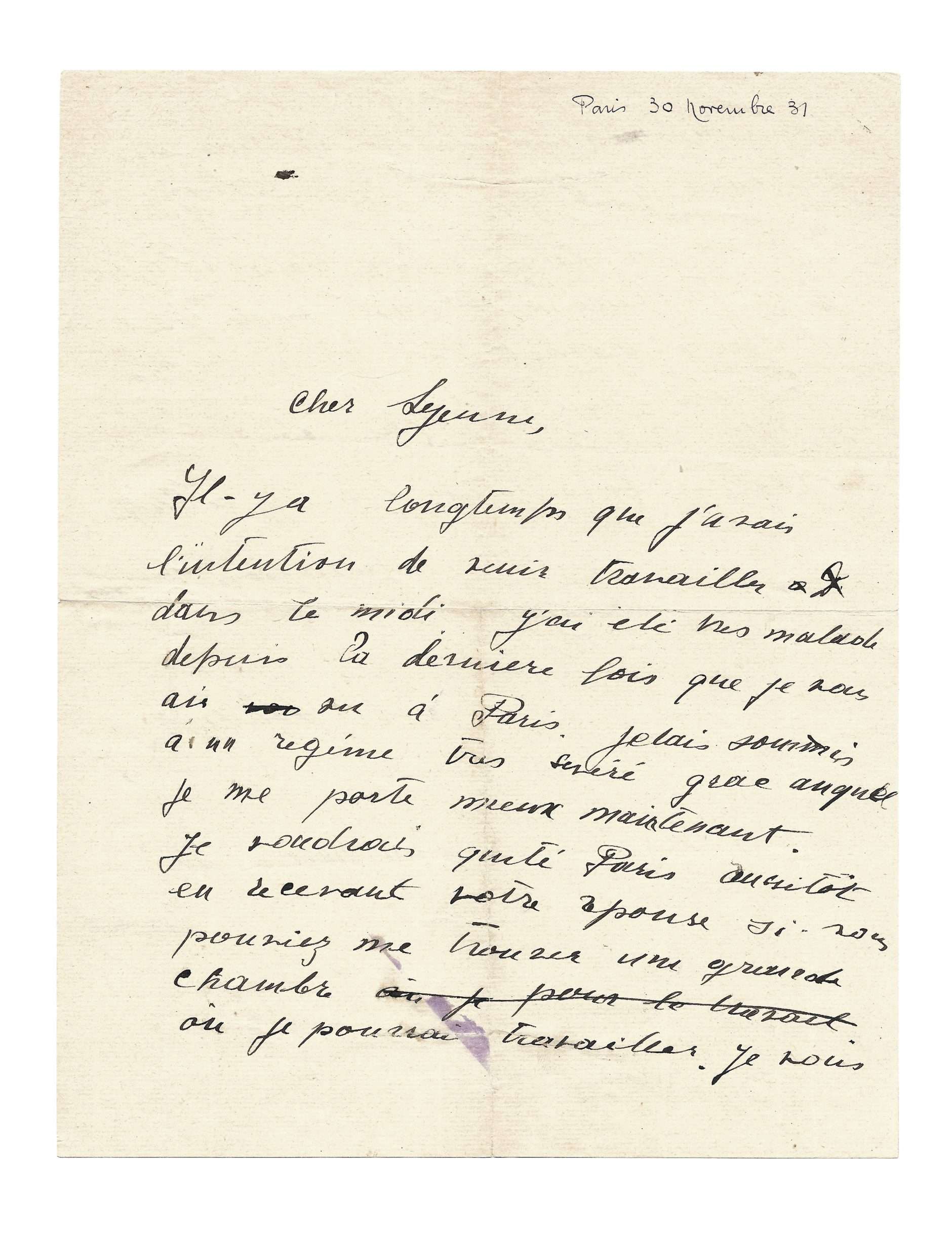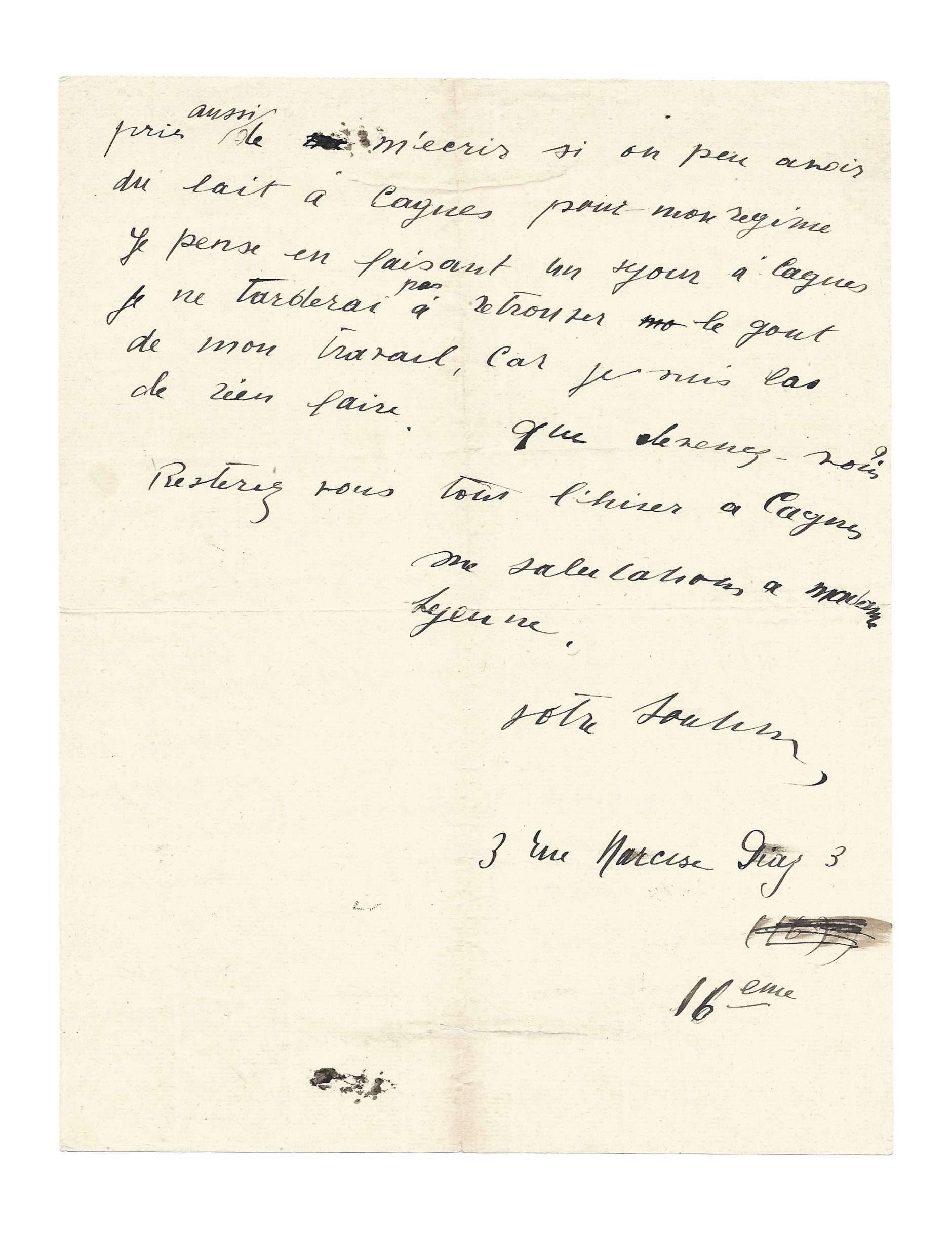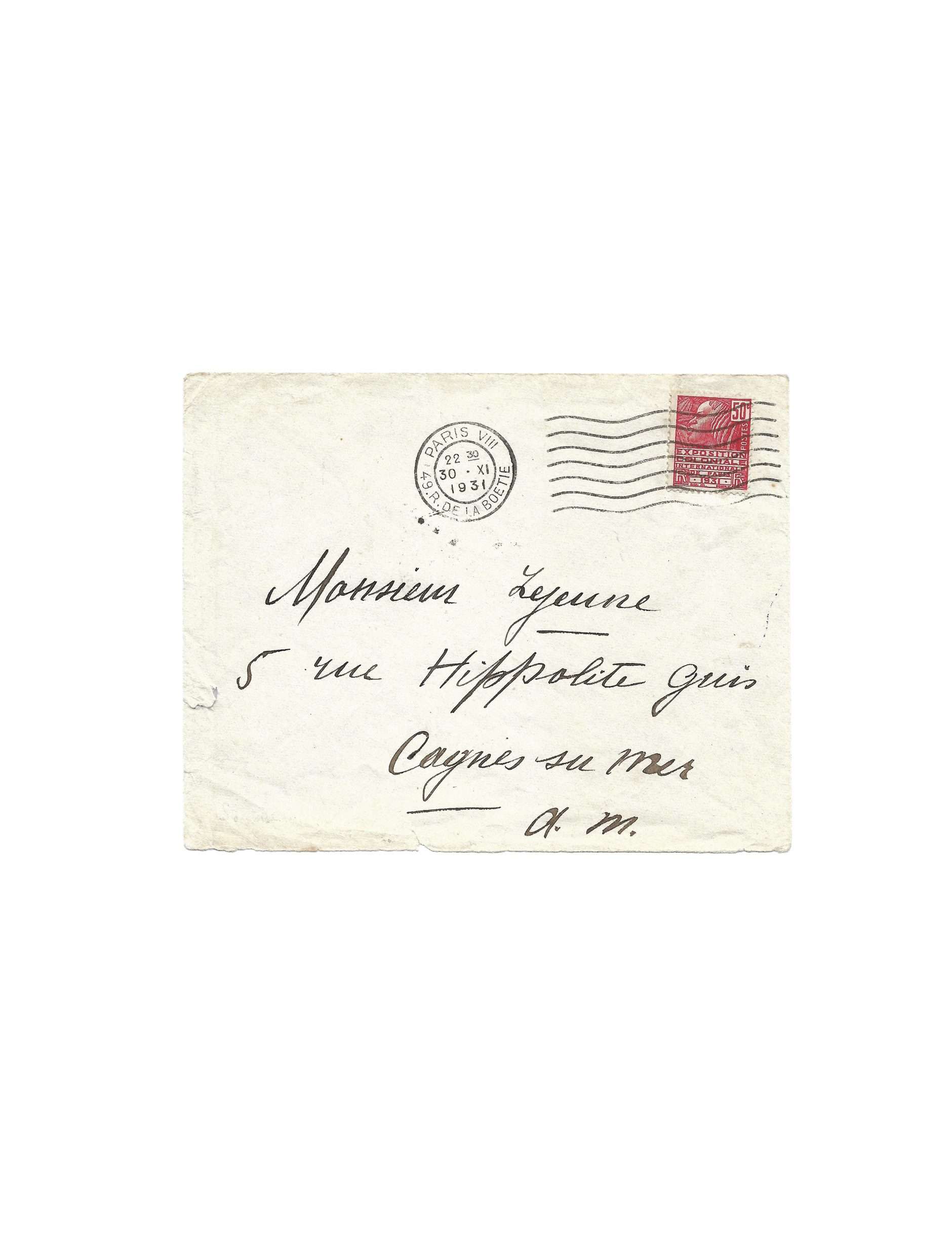SOUTINE, Chaïm (1893-1943)
Autograph letter signed « Votre Soutine » to Émile Lejeune
Paris, 30th November [19]31, 2 p. in-4°
« It won’t be long before I get back to work »
Fact sheet
SOUTINE, Chaïm (1893-1943)
Autograph letter signed « Votre Soutine » to Émile Lejeune
Paris, 30th November [19]31, 2 p. in-4°
Autograph envelope attached
Date added on top margin of first page (by Lejeune?)
Some stains and autograph corrections by Soutine
Soutine wishes to join his friend Lejeune in the South of France to seek his inspiration as an artist
We transcribe the letter as Soutine wrote it, with numerous mistakes:
« Cher Lejeune,
Il y a longtemps que j’avais l’intention de venir travailler à D dans le midi. J’ai été très malade depuis la dernière fois que je vous ai voi vu à Paris. Jetais soummis à un régime tres sevéré grac auquel je me porte mieux maintenant.
Je voudrais quité Paris aussitôt en recevant votre reponse si vous pouviez me trouver une grande chambre où je pour le travail où je pourra travailler. Je vous prie aussi de me m’ecrir si on peu avoir du lait à Cagnes pour mon regime. Je pense en faisant un sejour à Cagnes je ne tarderai pas à retrouver mo le gout du travail, car je suis las de rien faire.
Que devenez-vous ?
Resterez vous tout l’hivers a Cagnes
Me salutations a madame Lejeune.
Votre Soutine,
3 rue Narcisse Dia 3
(16e)
16eme »
In 1931, Soutine had already enjoyed recognition from the art community and collectors since the mid-1920s. We know, however, that the artist has always had complicated relationships with his patrons as well as with the very idea of success or fortune. This letter is the only one known where he explicitly mentions his health problems. His stomachaches had serious consequences on his pictorial production. Even at the time when he resided at La Ruche, plagued by vermin and penniless, Soutine had in all likelihood been the bearer of a tapeworm. This led to a stomach ulcer, worsening over the years. Of fragile health, Soutine had invented diets based on milk and potatoes but was nevertheless forced, on several occasions, to have to stop painting for weeks or even whole months.
Hoping to regain a taste for work in the South, he asked his friend the painter Émile Lejeune to find him a room that would serve as his studio. However, we can be surprised by this desire that animates him then to return to Cagnes, he who wrote in 1923 to the art dealer Zborowski wanting to “leave Cagnes this landscape [he] can not stand”.
Intimate of Soutine, Modigliani, Picasso and Matisse, Émile Lejeune (1885-1964) is a painter of Swiss origin. He owned a studio in the Montparnasse district where many artistic events took place between 1916 and 1919. Major figures of the time such as Erik Satie, Apollinaire and Jean Cocteau met there. His studio was a mecca of artistic “bohème” of the time. Lejeune is immortalized on one of Soutine’s most famous portraits: Portrait of a Man [Emile Lejeune], painted in 1923 and now kept at the Musée de l’Orangerie under the inventory number FR196394.
Soutine’s autograph letters are very scarce





